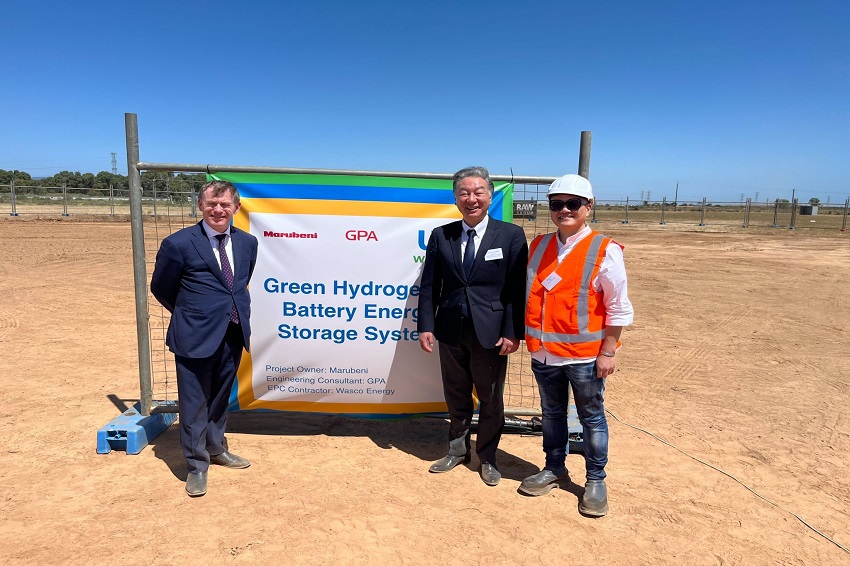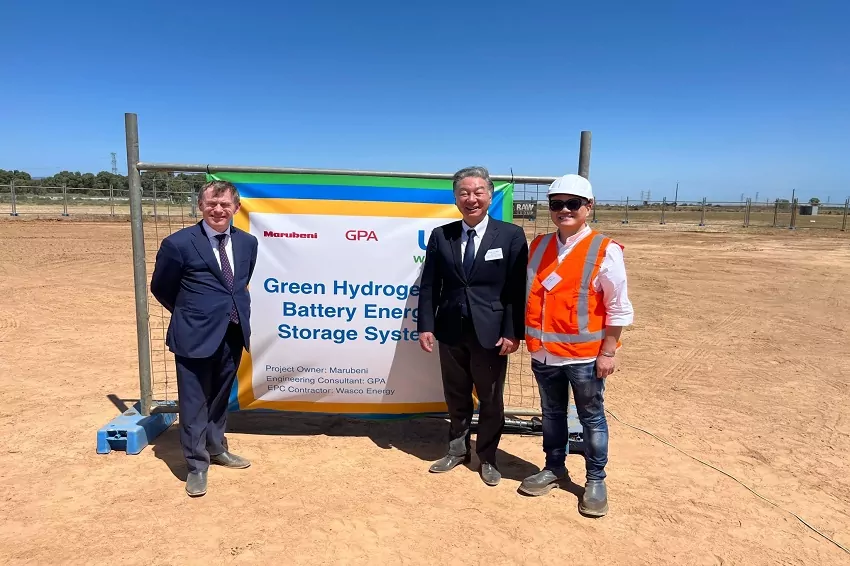

(C) PV Magazine
South Australia will soon be exporting green hydrogen to an Indonesian company, marking a major milestone in the development of the renewable energy industry. The agreement between the two countries is seen as a crucial step towards establishing a competitive global green hydrogen market, with SA leading the charge. In this blog post, we will explore how this export deal came about and why it’s so important for international efforts to promote green energy sources. We’ll also look at what the future of green hydrogen looks like for Indonesia and beyond.
What is green hydrogen?
Green hydrogen is a clean, sustainable energy source that can be used to power vehicles, homes, and businesses. It is produced through the electrolysis of water using renewable energy sources such as solar and wind. Green hydrogen can also be used to create synthetic fuels that can be used in existing infrastructure, such as gas pipelines and petrol stations.
The South Australian government has announced plans to export green hydrogen to Indonesia, in a move that could create new jobs and boost the state’s economy. The project will involve building a large-scale green hydrogen production facility in SA’s Port Augusta region. The facility will use renewable energy to produce green hydrogen, which will then be exported to Indonesia via shipping.
The project is part of the South Australian government’s plan to become a world leader in green hydrogen production. If successful, it could create hundreds of jobs in the state and position SA as a key player in the global green hydrogen market.
The benefits of green hydrogen
Green hydrogen offers several benefits over traditional fossil fuel-derived hydrogen. These include:
1) Reduced emissions: Green hydrogen is produced using renewable energy sources, resulting in far lower emissions than hydrogen produced from fossil fuels. This is important for both combating climate change and improving air quality.
2) Increased energy security: By diversifying our hydrogen production away from fossil fuels, we can reduce our dependence on imported oil and gas. This increases our energy security and reduces our vulnerability to price shocks.
3) Cost savings: Green hydrogen is currently more expensive to produce than traditional hydrogen, but costs are falling rapidly as technology improves and scale increases. In the long term, green hydrogen is likely to be much cheaper than fossil fuel-derived hydrogen.
4) Job creation: The shift to green hydrogen will create new jobs in the renewable energy sector and associated industries. This will help boost local economies and drive innovation.
SA’s green hydrogen export plan
The South Australian government has announced a plan to export green hydrogen to Indonesia. The state has signed a Memorandum of Understanding with the Indonesian government to explore the potential for exporting green hydrogen.
South Australia has the potential to become a major exporter of green hydrogen, due to its large renewable energy resources and its proximity to Indonesia. The state is already home to the world’s largest battery, which is used to store renewable energy and provide power when demand is high.
The Memorandum of Understanding between the two governments will allow for further exploration of the technical and economic feasibility of exporting green hydrogen from South Australia to Indonesia. If successful, this could lead to the development of a new industry in South Australia and create jobs in the clean energy sector.
Indonesia’s interest in green hydrogen
As the world’s fourth most populous country and Southeast Asia’s largest economy, Indonesia is an attractive market for green hydrogen. The country has set ambitious targets to reduce its emissions by 29% by 2030 (compared to business as usual) and has committed to achieving carbon neutrality by 2050.
Indonesia’s interest in green hydrogen is part of a wider trend in the country toward renewables. The Indonesian government has set a target of increasing the share of renewable energy in the power mix to 23% by 2025, up from around 7% currently. Green hydrogen can play a role in meeting this target, as it can be used to generate electricity with zero emissions.
There are several projects underway that aim to export green hydrogen from Australia to Indonesia. One such project is the Australian-Indonesian Renewable Energy Partnership, which is investigating the feasibility of exporting green hydrogen from Australia’s Northern Territory to Indonesia’s North Sumatra province. If successful, this project could lead to the development of a large-scale green hydrogen export industry between Australia and Indonesia.
How green hydrogen will benefit Indonesia?
Green hydrogen will benefit Indonesia in many ways. It is a clean and renewable energy source that can help Indonesia meet its energy needs while reducing the environmental pollution.
Green hydrogen can be used to power vehicles, homes, and businesses, providing a cleaner and more efficient alternative to fossil fuels. It can also be used to generate electricity, making it an important part of Indonesia’s efforts to increase its use of renewable energy.
In addition to its environmental benefits, green hydrogen is also cheaper than traditional fossil fuels. This will help Indonesia save money on energy costs, which can be used to invest in other areas of the economy.
Finally, green hydrogen will create new jobs in Indonesia. The production and use of green hydrogen require new technologies and skills, which will provide employment opportunities for Indonesians.
In conclusion, the South African-Indonesian green hydrogen export agreement is a great example of how two countries can work together for mutual benefit. By leveraging their respective strengths in renewable energy and shipping infrastructure, both SA and Indonesia stand to gain economically while also contributing to the global effort to reduce carbon emissions. This partnership could be an important step forward in establishing a more sustainable future for all people.
Read More:- The West Philippine Sea laser incident serves as the first test case for the new PH-China communication line
OpenAI updated ChatGPT-4o to include its best text-to-image tools so free users can generate Studio Ghibli artwork by giving basic…
The stepping down of Piyush Gupta from the post of CEO of DBS Bank came after 15 years of leading…
The Delhi Directorate of Education releases 2025-26 marks for year-end tests in school levels 6 through 11. Online test data…
Singapore will further cement its status as an important basketball destination when it hosts three FIBA 3x3 events in 2026…
Jewel Section E, directed by Theodore Boborol and starring Ashtine Olviga as Jay-Jay Mariano, Andres Muhlach as Mark Keifer Watson,…
Cebu Pacific celebrates the delivery of its very first aircraft for 2025, the 459-seat Airbus A330neo, delivered at Ninoy Aquino…
This website uses cookies.
Read More